- Wondering how to get Monopoly GO! free rolls? Well, you’ve come to the right place. In this guide, we provide you with a bunch of tips and tricks to get some free rolls for the hit new mobile game. We’ll …
Best Roblox Horror Games to Play Right Now – Updated Weekly
By Adele Wilson
Our Best Roblox Horror Games guide features the scariest and most creative experiences to play right now on the platform!The BEST Roblox Games of The Week – Games You Need To Play!
By Sho Roberts
Our feature shares our pick for the Best Roblox Games of the week! With our feature, we guarantee you'll find something new to play!Type Soul Clan Rarity Guide – All Legendary And Common Clans Listed!
By Nathan Ball
Wondering what your odds of rolling a particular Clan are? Wonder no more, with my handy Type Soul Clan Rarity guide.
Combining Narrative with Fast-Paced Shooting – Quantum Revenge [Interview]
Arcade style shoot-em-ups are all well and good, but sometimes the sole focus to just keep racking up a new high score can be more than a little dull. Where’s the character? Where’s the heart? Realtech VR have aimed to …
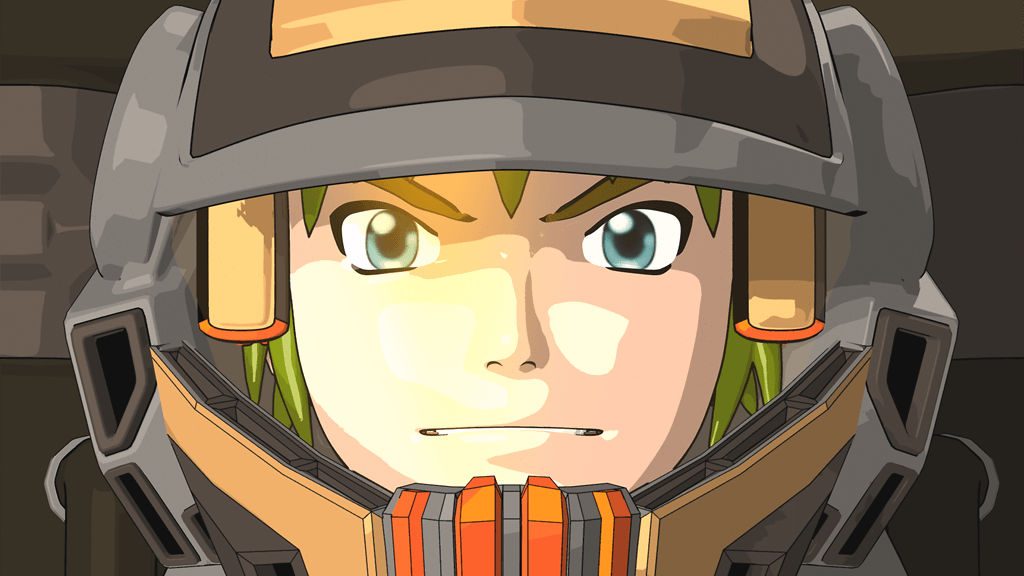
Arcade style shoot-em-ups are all well and good, but sometimes the sole focus to just keep racking up a new high score can be more than a little dull. Where’s the character? Where’s the heart?
Realtech VR have aimed to address this issue with its new title Quantum Revenge, which looks to combine psychedelic shooter gameplay with likeable characters that you grow attached to and root for.
The team behind the game spoke to Gamezebo about why they attempted such a combination, the difficulties encountered when developing the game, and tips for first time Quantum Revenge players.
Can you explain a little about how the game works, and the genre it fits into?
It’s a dual stick shooter in the same spirit as Geometry Wars and Galaga Legions where large waves of enemies are constantly on the attack. The controls are simple – one stick for moving, one for firing, and another for your super move and booster. You can choose from 5 different characters which have varying abilities.
How important is the story element of the game?
We are a really small team of three. In the early version of the game we had lot of cutscenes in the game, but we decided to not include them in the final version – focusing our resources on pure arcade action instead.
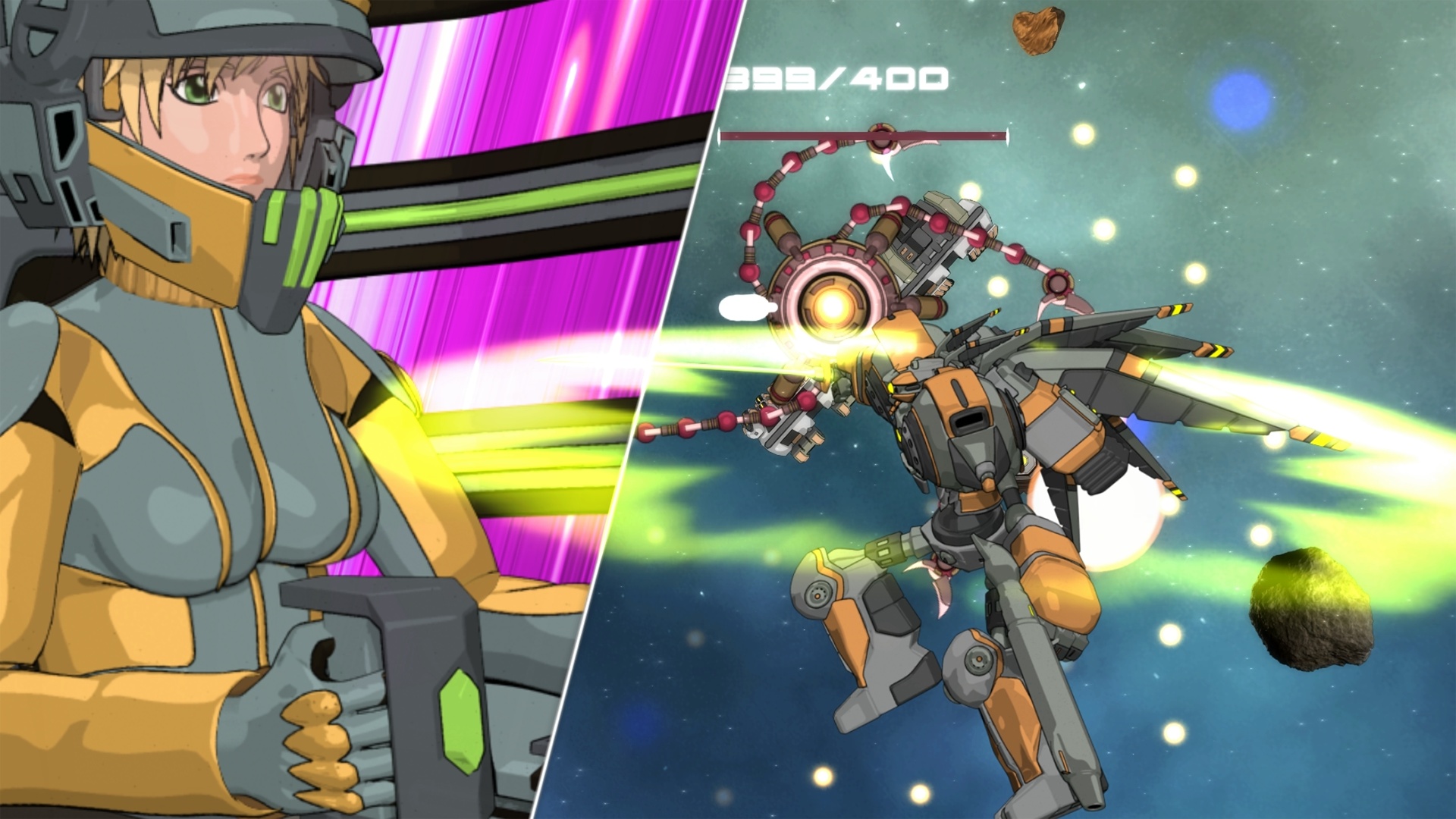
What were your team’s main influences when developing Quantum Revenge?
The game pays homage to the Japaneses anime from our childhoods. We took inspiration from classics such as UFO Grendizer, Macross, and the Gundam series. We think there were almost no games using anime and mechs in the Western market, despites movies like Pacific Rim and Iron Man.
What specifics tools and techniques did you use to develop the game?
We used an in-house 2D/3D engine we’ve employed in our productions from several years, and also a new engine we’ve re-used while working on Tomb Raider – which is using the latest technique in OpenGL ES 3 and Metal (like technique called indirect rendering, basically reduce the overhead for draw calls). All the game assets were 3D modeled and pre-rendered to look cell shaded – since we wanted to have lot of sprites this was the most obvious choice. We worked closely with nVidia as well for the nVidia Shield TV and Tablet version.
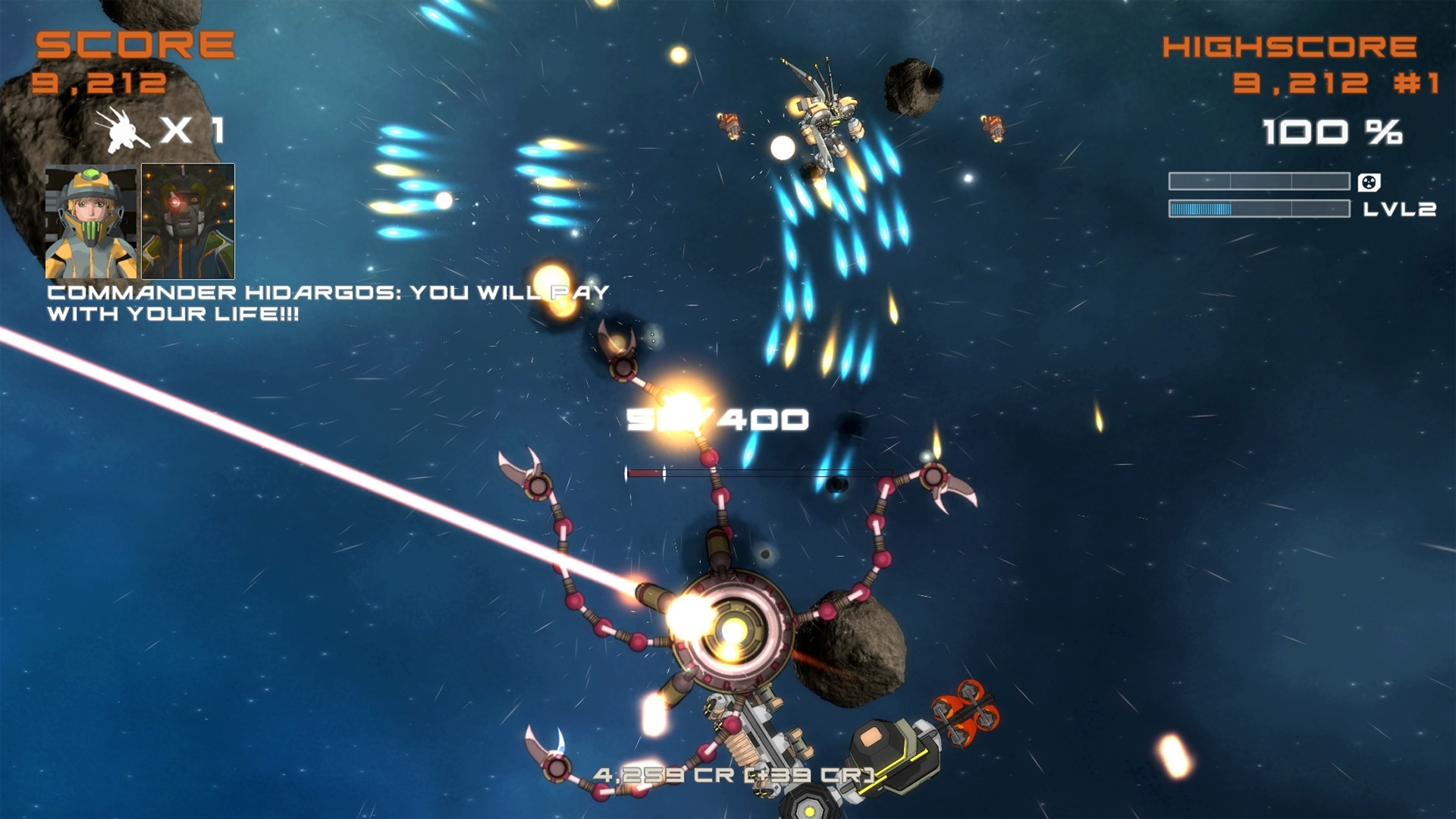
Can you explain the upgrade system in the game, and why it’s unique?
The player has two power bars – the firepower bar and special ability bar. When you lay fire down on enemies it rises the firepower bar – which levels up your firepower. So the more you fire on enemies, the more your level increases. The maximum level up is dependent of your experience level.
The second bar is increased when you receive damage, or if you’re firing on bosses only. If you bar is one third filled you can use that bar for a boost – otherwise you can engage the super power attack. We’ve given more details on each power up module below:
Permanent Modules:
- Module A: Increase Super move Damage (4 steps)
- Module B: Upgrade our primary weapon firepower by 5% (10% 15% 20%)
- Module C: Super move Bar Increase Faster
- Module D: Increase Armor Resistance
Temporary Modules:
- Module E: Double the amount of cash you get next round.
- Module F: Boost jump first half of the level
- Module G: Boost all your stats (full drone, full shield)
- Module H: On death: revive at 40% health with two seconds of invincibility
For drones there are three differents drone which can pickup or collected too, and you can have up to five.
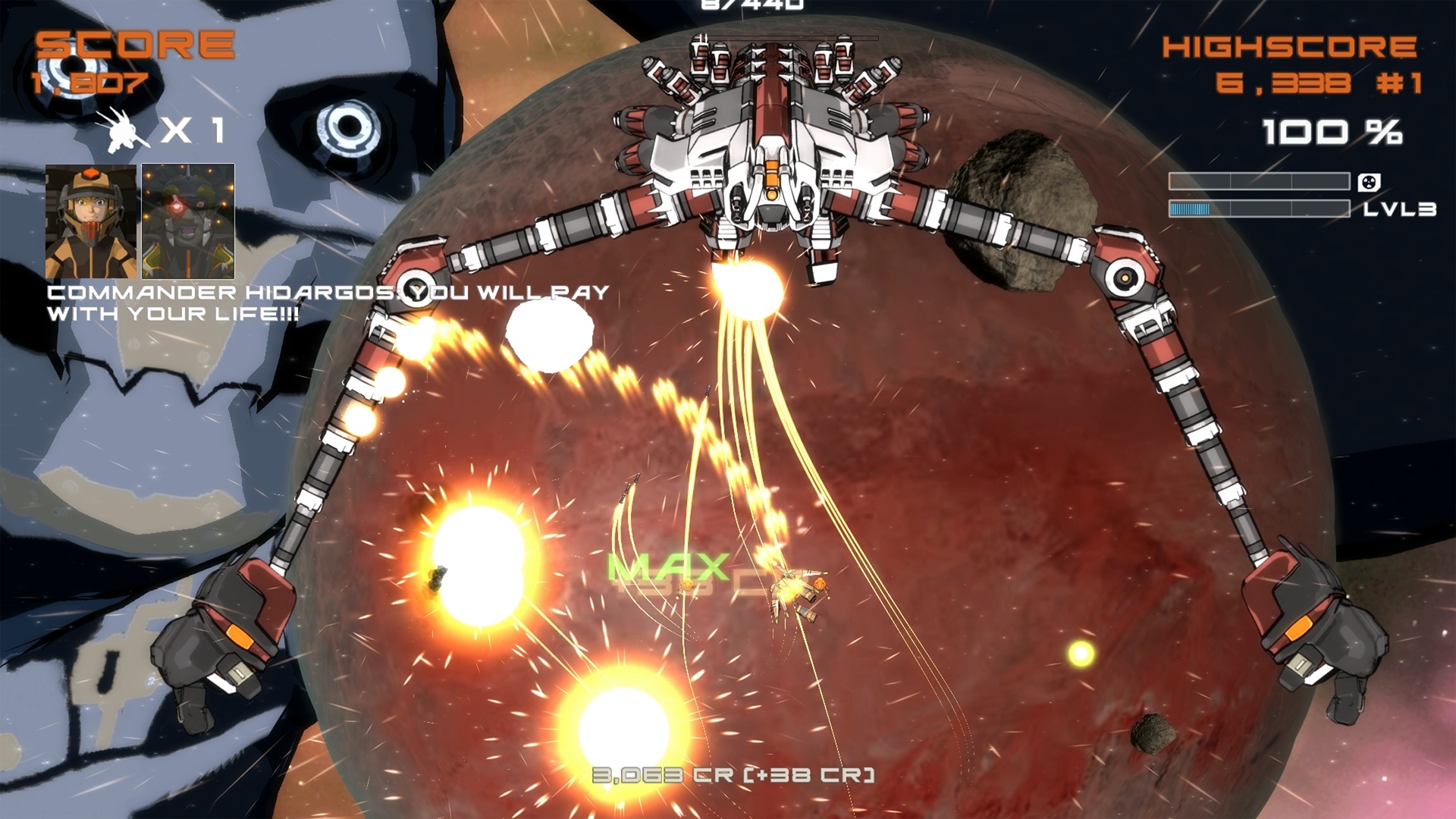
Why did you make the game – what were the main reasons you felt it needed to be created?
After working on our beat em up Brotherhood of Violence and the Tomb Raider mobile port we decided to go back to the shooter genre. We originally started Quantum Revenge as a sequel to our 2013 shooter Kosmik Revenge, which was a pixel art styled arcade shooter. But while developing the game we found out the “anime” look was quite cool, and we decided to fully commit to it – especially since the pixel art style is overused nowadays. We wanted something different, more cartoonish.
What challenges did you face during development, and how did you overcome them?
So as we stated earlier we are a really small team, and we do this part time away from our main jobs. So the biggest challenge is the amount of work required to complete a game!
As for the physics, we used an SDK which fit well for 2D game – but we modified it for full multithreaded title (especially with phones with multi-cores, all the physics is used on separated CPU). So the main challenge was to maintain 60fps on an iPhone 6 while displaying many effects on screen, having a 3D background, and offer post processes like god rays on a mobile device (this is very unusual for the format).
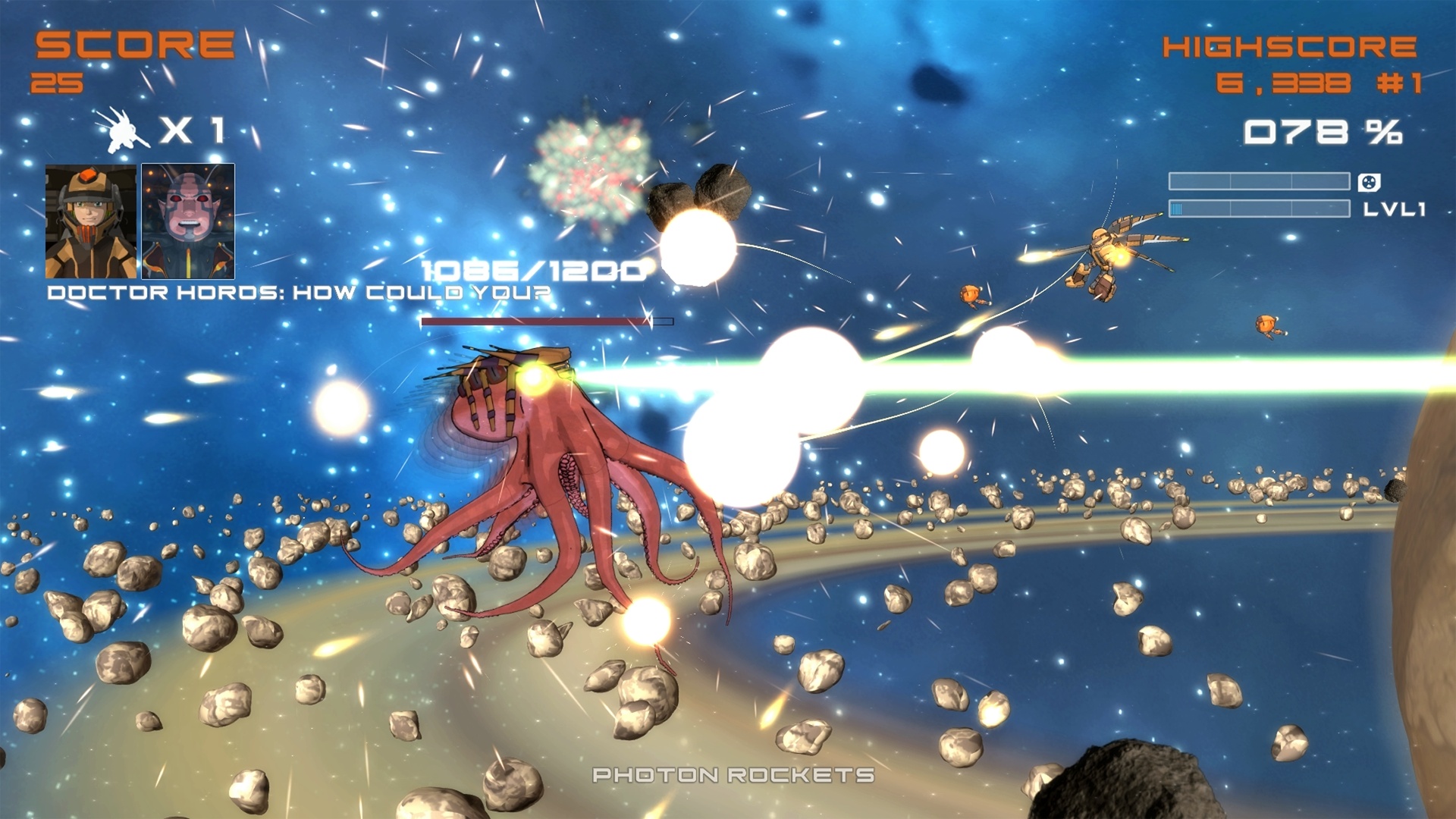
Which part of the game are you personally the most proud of and why?
The overall look of the game, as it’s our tribute to our childhoods. And I would also say the introductory cutscene. It was made in around a week as the team worked tirelessly day and night just before we submitted the game….
What tips do you have for people playing Quantum Revenge for the first time?
- Try not to get hit, and destroy lot of enemy as this will increase your firepower!
- Pick up the orbs! Yellow orbs offer credits and you need them to purchase upgrades and more. Green orbs offer health regeneration. Blue orbs allow you to upgrade your firepower. Finally Purple orbs are rare but allow you to unlock extra robot parts…
- Use the Yellow orbs credits to unlock upgrades in the store. We give you 25,000 credits at the start of the game, enough for many continues – but if you want to explore the game deeper, you can also exchange items with new players.
- If the game is too tough for you go to the options page and try some of the other control modes. Also the game is compatible for ‘Made for iPhone’ controllers and Android game controllers (including Apple TV and Google TV) if you’d prefer to try the title on a bigger screen.
- Don’t forget the game is continuously saving your checkpoints, so you can play a bit – and if you leave the app and then come back you won’t restart from the beginning of the game – but simply pick up from where you left off.
How important are the music/sound effects in the game, and what was the process when deciding what type of audio worked best for the game?
Beside the intro sequences all the music tracks (more than twenty) and sound effects were created for the game by Goldchimes (www.goldchimes.com). He made the soundtrack from No Gravity (www.nogravitygame.com), and he’s an active French lounge musician (he created some of the soundtrack for the movie Time Lapse for example).
In this type of game the music and sound effects help to create an extra layer of excitement to the gameplay. So it was therefore quite important to have the right mix of ‘boom’ from the music and the game sound effects. For the intro tune, we used a more rock style track which suits the game’s anime and manga style.
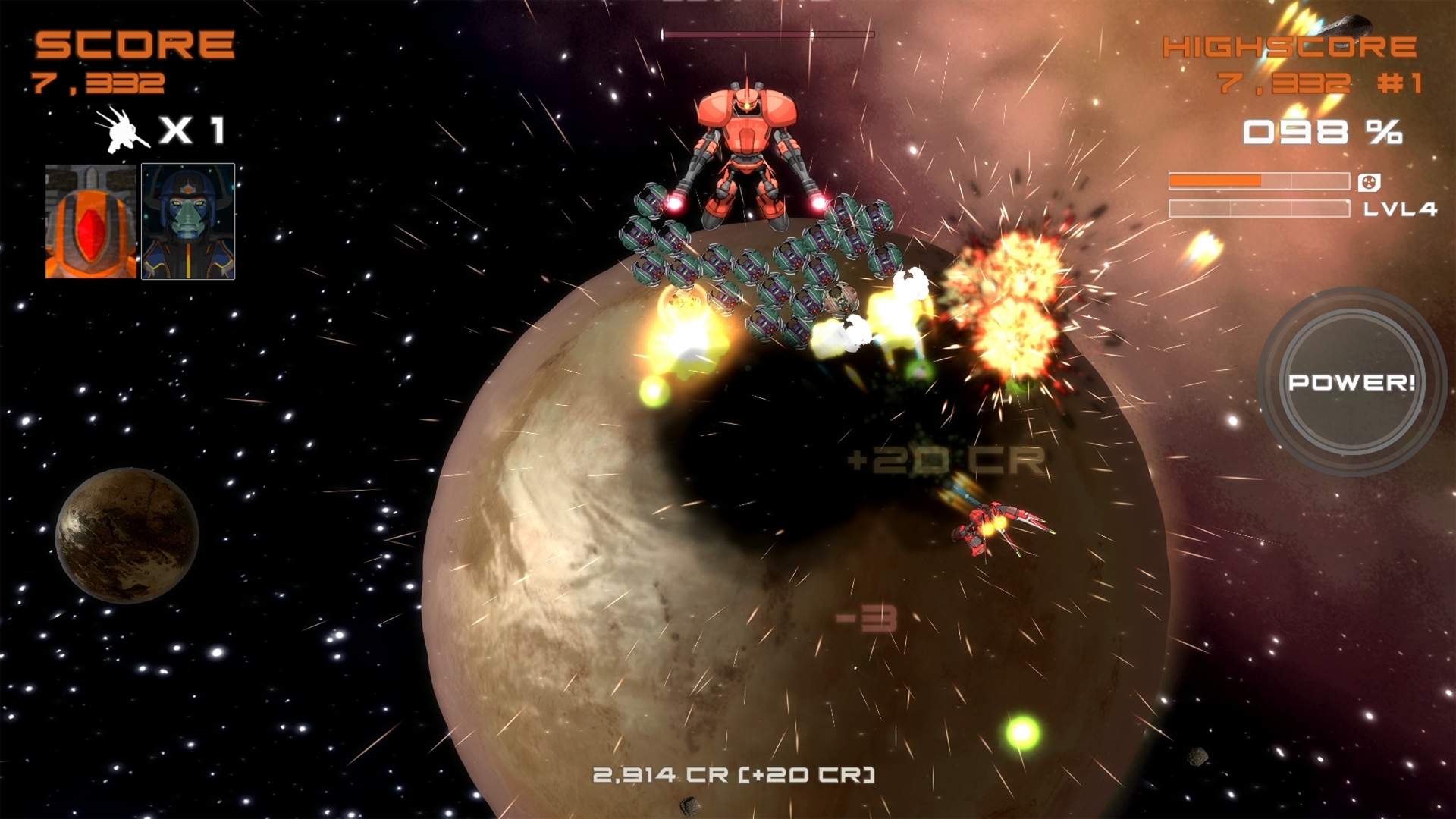
Do you have anything planned in terms of future updates for the game, and if so, can you give us any details of what these might include?
First we going to listen to fan comments and then update the game for the coming months. In a second stage we could release a second story mission, we also offer iMessage stickers – so any new updates we can add more stickers for our users.
The game was recently updated actually – what did this include?
We’ve added iPhone force touch support, with the two virtual sticks being used for your boosters (left stick) and super attacks (right stick). There have also been some bug fixes and improvements. We are currently working to include further language support in the next update at the end of this week, and answering as many of the demands of our players as possible.
Have you any plans to bring the game to any other platforms?
We are currently working with NVIDIA for the Shield version of Quantum Revenge – an Amazon Fire TV version is also planned. Also a version optimized for Vulkan API is planned for Android as well. We also planned to enter the PC market with a Windows Store version for starting with potentially a version for Xbox One store. Nintendo Switch also would be a nice fit, especially if we promise an improved story mode, improved levels and more.
You can download Quantum Revenge now from the App Store [buy] or Google Play [buy] for the introductory price of $2.99.
More articles...
Monopoly GO! Free Rolls – Links For Free Dice
By Glen Fox
Wondering how to get Monopoly GO! free rolls? Well, you’ve come to the right place. In this guide, we provide you with a bunch of tips and tricks to get some free rolls for the hit new mobile game. We’ll …Best Roblox Horror Games to Play Right Now – Updated Weekly
By Adele Wilson
Our Best Roblox Horror Games guide features the scariest and most creative experiences to play right now on the platform!The BEST Roblox Games of The Week – Games You Need To Play!
By Sho Roberts
Our feature shares our pick for the Best Roblox Games of the week! With our feature, we guarantee you'll find something new to play!Type Soul Clan Rarity Guide – All Legendary And Common Clans Listed!
By Nathan Ball
Wondering what your odds of rolling a particular Clan are? Wonder no more, with my handy Type Soul Clan Rarity guide.







